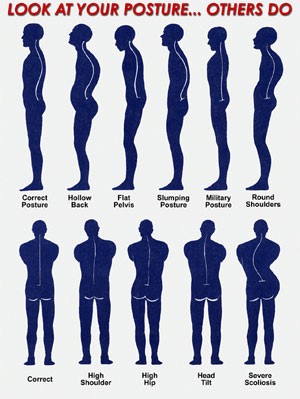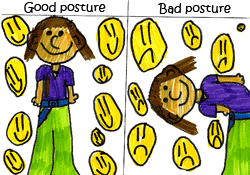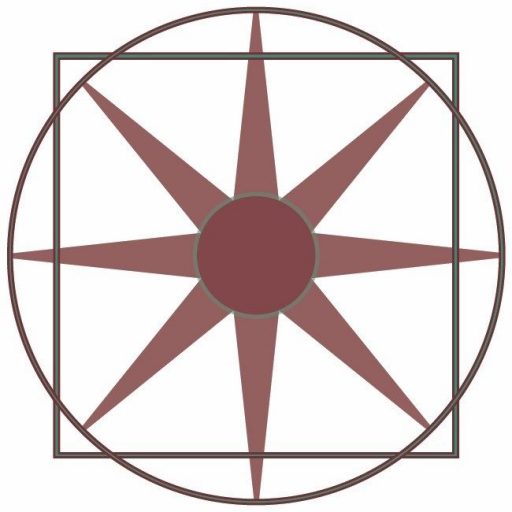
About 8 in 10 people suffer from one or more bouts of lower back pain, often leading to time off work
Non-specific lower back pain is very common, often comes on without specific injury and is frequently caused and maintained by bad postural habits either at work or at home. This can often lead to compensation in other parts of the muscular skeletal system causing pain. Osteopaths specialise in not just restoring muscular skeletal function, but in discovering the ‘root cause’ of the problem to help maintain and prevent future bouts of pain.
I achieve this by educating you about how to improve your posture with a treatment and exercise plan. How you sit or lift within your working environment will have an impact in your long-term muscular skeletal health.
Common conditions that we, as Osteopaths, will see
Lower back conditions, osteoarthritis and shoulder complaints to name but a few.
- 8 out of 10 people will suffer from some form of back pain within their lives.
- Non-specific low back pain i.e. muscular strain, ligament strain, tendonosis, disc or somatic dysfunction (a misalignment of the spinal vertebrae this can be a single lesion or a group lesion) typically treatment can last between 3-6 treatments, depending on the patient and their success with home exercises and advice.
- Facet syndrome, where between two facets the capsule has become entrapped leading to pain, muscle guarding and an antalgic posture, these individuals may come to see you on crotches, however once the capsule is released the patient makes a quick recovery.
- Chronic low back pain typically can be due to the aging process as we age so do our joints degenerate, typically most people over the age of 45 will show some form of degenerative changes this be from a bony encroachment (Osteophytic growth or lipping of the vertebrae this may be due to spondylotic changes – see later.)
- This can lead onto nerve root impingement (NRI) by the osteophytes leading to the typical ‘sciatica’ symptoms reported by the patient i.e. shooting pain down the back of the thigh into the leg with numbness, tingling or pins and needles. Although another condition also can give these symptoms i.e. PIVD – Prolapsed Inter Vertebral Disc where the nucleus pulposus passes through the annulus fibrosis (protrusion, extrusion and sequestration) this can be due to annular tears, such as peripheral, concentric or radial tears. NRI was thought to be due to a disc bulge (protrusion of the nucleus pulposus) pressing upon the nerve root, however, it may be the case that once sequestration has taken place this sets up an inflammatory response which the irritates the spinal nerve and so referred pain is felt in the posterior aspect of the LEX.
- Chronic conditions with degenerative changes such as Spondylosis, affecting disc height the patient can suffer from neurological symptoms such as shooting pain into the back of the thigh and leg with possible sensory changes (Pins and needles, numbness or tingling sensation.
- Osteoarthritis that affects many joints of the body typically the fingers, knees, hips and spine. These areas can be helped with osteopathy and are frequently through techniques such as soft tissue treatment, articulation and traction.
- Other areas seen by Osteopath are shoulders, possibly due to the amount of movement that these have. A reduced ball and socket joint with the rotator cuff muscles acting as stabilisers.
- Conditions such as painful arc syndrome a form of impingement syndrome where the supra spinatus tendon can become irritated by its passage under the coracoacromial arch. Rotators cuff tears typically rapid onset with pain when bringing the hand above the head in an arcing movement. Frozen shoulder can be a chronic condition due to the length in time of recovery; however, the patient may also have yellow flags, depression can be linked to this condition which may last for months or years.

“After Slipping 2 disc’s in my back at the age of 29 I was initially referred to the NHS. During the next 3 years I experienced 2 spinal epidurals in an aim to release the pain.
I worked through 4 physio Therapists and 1 private Chiropractor. Aged 32 the NHS said there was nothing more they could do. I suffered for the next 7 years which impacted my physical and mental wellbeing. Hence when It was recommended to try Osteopathy with Niki I was Sceptical.
During the last 2 years Niki has not only educated me as to how to support my new posture, how to live to protect a healthy back, but has continued to be a positive reinforcer towards balancing my physical and mental health.”
Julie Bell
Having good posture means that you…
- Avoid slouching when sitting
- Warm up before and after exercise
- Always bend your knees and keep your back straight when you lift
- Never lift anything more than a quarter of your body weight
- Remember that pain is a red light….
Kids
Osteopathy is a distinct approach to healthcare based on a well-established system of clinical diagnosis. An Osteopath will focus on the structure of the body using safe, natural, manual treatment for a non-invasive approach tailored to the individual needs of each patient – at every stage of life from birth to old age. Predominantly, gentle manipulative techniques are used to correct joint and tissue imbalances, allowing restoration of balance within the patient’s body. Osteopathy treats the person as well as the disorder. The objective is the promotion of long-term health.

We are also keen to promote and educate the younger generation in long-term spinal health. This is an important message. Learning about a good diet, the benefits of regular exercise to promote good bone development and an understanding of good posture will ensure the support of long-term musculoskeletal health.
Everybody has a skeleton made up of 206 bones, which gives your body structure and amazing gift of movement as well as protecting your internal organs
Bones are the framework for your child’s growing body. Bone is living tissue that changes constantly, with bits of old bone being removed and replaced by new bone. You can think of bone as a bank account, where (with your help) your kids make “deposits” and “withdrawals” of bone tissue. During childhood and adolescence, much more bone is deposited than withdrawn as the skeleton grows in both size and density.
As parents and carers, it is vital to think about children’s bones. Building healthy bones by adopting healthy nutritional and lifestyle habits in childhood is important to help prevent osteoporosis and fractures later in life. Calcium and Vitamin D are the 2 key nutrients when building strong bones. Calcium supports your bones and teeth structure and Vitamin D improves calcium absorption and bone growth.
Regular exercise stimulates bone development. Encouraging your family to participate in sports and activities will provide your child with stronger healthier bones to carry them through life.
Good posture not only promotes great skeletal development but also helps to prevent excessive wear on joints as the you age
Is your child rounding their shoulders or appear to be unbalanced when sitting or standing? Are older children suffering from aches and pains after sports? How do they play with their toys or study on tablets or computers? Are they always looking down, slumping their shoulders forward, or leaning to one side?
“The best place to start is to be aware.”
THE EQUESTRIAN OSTEOPATH
Poor Postural Effects
In the long-term, abnormal bone growth could result from poor posture. Bones can grow abnormally if they have too much pressure put in one direction, as the bones change their shape it becomes much more difficult to correct the problem
However, posture can still be improved whatever your age. We offer practical advice on how to improve and promote good posture for your whole family.
Contact us
